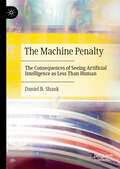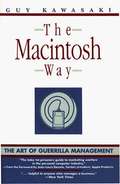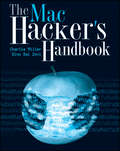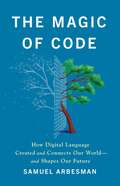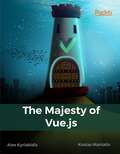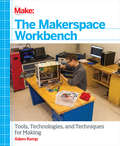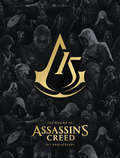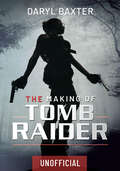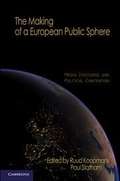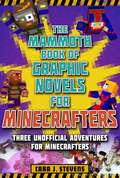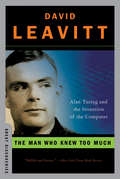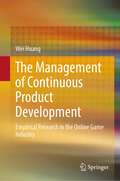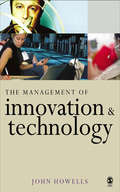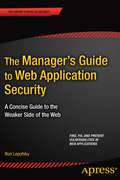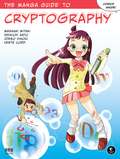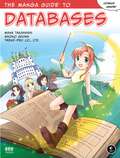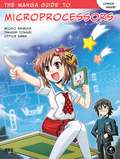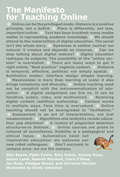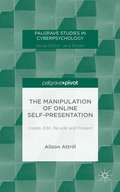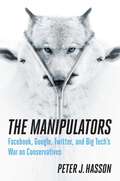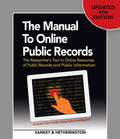- Table View
- List View
The Machine Penalty: The Consequences of Seeing Artificial Intelligence as Less Than Human
by Daniel B. ShankThis book makes the argument that comparing AI to humans leads us to diminish similar outcomes from AI across situations. This may be taking a human&’s advice for a restaurant recommendation over an AI&’s or believing that AI can&’t be as biased as people can when denying loans to others. This machine penalty is caused both by comparing humans and AI in terms of appearance, identity, behavior, mind, and essence, and by situations involving controllable, personal, important, subjective, or moral decisions. It can be applied across many different situations, where we diminish different AI outcomes. We penalize machines&’ influence when they give advice, fairness when they evaluate people, blame when they cause harm, value when they produce art, and satisfaction when they provide companionship. The result is immediate consequences in those domains and downstream consequences for society. This monograph brings together diverse research from human-computer interaction, psychology, sociology, and communication including theories such as Computers Are Social Actors, anthropomorphism, mind perception, and algorithm aversion to present an expansive argument and evidence for the machine penalty.
The Macintosh Way
by Guy KawasakiThe Macintosh Way is the take-no-prisoners guide to guerrilla marketing warfare in the personal computer software industry, celebrating passion, competition, excellence, and hard work.
The Mac® Hacker's Handbook
by Dino Dai Zovi Charlie MillerAs more and more vulnerabilities are found in the Mac OS X (Leopard) operating system, security researchers are realizing the importance of developing proof-of-concept exploits for those vulnerabilities. This unique tome is the first book to uncover the flaws in the Mac OS X operating system-and how to deal with them. Written by two white hat hackers, this book is aimed at making vital information known so that you can find ways to secure your Mac OS X systems, and examines the sorts of attacks that are prevented by Leopard's security defenses, what attacks aren't, and how to best handle those weaknesses.
The Magic Ring: Systems Thinking Approach to Control Systems (Contemporary Systems Thinking)
by Piero MellaThis book presents a new understanding on how control systems truly operate, and explains how to recognize, simulate, and improve control systems in all fields of activity. It also reveals the pervasive, ubiquitous and indispensable role of control processes in our life and the need to develop a “control-oriented thinking”—based on uncomplicated but effective models derived from systems thinking—that is, a true “discipline of control.” Over the book’s thirteen chapters, Piero Mella shows that there are simple control systems (rather than complex ones) that can easily help us to manage complexity without drawing upon more sophisticated control systems. It begins by reviewing the basic language of systems thinking and the models it allows users to create. It then introduces the control process, presenting the theoretical structure of three simple control systems we all can observe in order to gain fundamental knowledge from them about the basic structure of a control system. Then, it presents the anatomy of the simplest “magic ring” and the general theoretical model of any control system. This is followed by an introduction to a general typology of control systems and a broader view of control systems by investigating multi-lever control systems and multi-objective systems. The book undertakes the concepts through various environments, increasingly broader in scope to suggest to readers how to recognize therein control systems manifestations in everyday life and in natural phenomena. Updated for the 2nd edition, new chapters explore control systems regulating the biological environment and the organizations, with an in-depth study of the control of quality, productivity, production, stocks and costs. Finally, it concludes by dealing with the learning process, problem-solving, and designing the logical structure of control systems.
The Magic of Code: How Digital Language Created and Connects Our World—and Shapes Our Future
by Samuel ArbesmanIn the tradition of classics such as The Lives of a Cell, a bold reframing of our relationship with technology that argues code is "a universal force—swirling through disciplines, absorbing ideas, and connecting worlds" (Linda Liukas). In the digital world, code is the essential primary building block, the equivalent of the cell or DNA in the biological sphere—and almost as mysterious. Code can create entire worlds, real and virtual; it allows us to connect instantly to people and places around the globe; and it performs tasks that were once only possible in science fiction. It is a superpower, and not just in a technical sense. It is also a gateway to ideas. As vividly illustrated by Samuel Arbesman, it is the ultimate connector, providing new insight and meaning into how everything from language and mythology to biblical texts, biology, and even our patterns of thought connect with the history and nature of computing. While the building block of code can be used for many wondrous things it can also create deeper wedges in our society and be weaponized to cause damage to our planet or our civilization. Code and computing are too important to be left to the tech community; it is essential that each of us engage with it. And we fail to understand it to our detriment. By providing us with a framework to think about coding and its effects upon the world and placing the past, current, and future developments in computing into its broader setting we see how software and computers can work for people as opposed to against our needs. With this deeper understanding into the &“why&” of coding we can be masters of technology rather than its subjects.
The Majesty of Vue.js
by Alex Kyriakidis Kostas ManiatisCreate fast front-end applications and increase the performance of your existing projects with Vue.js integration About This Book * Learn about computed properties, components, filters, routing, ES6, and workflow automation * This book will show you how easy Vue.js is to grasp, and that its integration can save you a lot of time and effort * This book will guide you through the path of the rapidly spreading JavaScript Framework Vue.js Who This Book Is For This book is for anyone interested in learning to use a lightweight and simple JavaScript framework. No excessive knowledge is required, though it would be good to be familiar with HTML and JavaScript. This book is also useful for those who already know their way around Vue.js and want to expand their knowledge. What You Will Learn * Get to know the fundamentals of Vue.js * Consume an API using Vue Resource * Explore components, filters, methods, and computed properties are and find out how to use them to build robust applications * Break your applications into Single File Components * Build Single Page Applications using Vue Router * Automate your workflow using Vue.js In Detail Vue.js is a library to build interactive web interfaces. The aim is to provide the benefits of reactive data binding and composable view components with an API that is as simple as possible. This book will teach you how to efficiently implement Vue.js in your projects. It starts with the fundamentals of Vue.js to building large-scale applications. You will find out what components, filters, methods, and computed properties are and how to use them to build robust applications. Further on, you will become familiar with ES6, single file components, module bundlers, and workflow automation. The best way to learn to code is to write it, so there's an exercise at the end of most of the chapters for you to solve and actually test yourself on what you have learned. You can solve these in order to gain a better understanding of Vue.js. By the end of this book, you will be able to create fast front-end applications and increase the performance of your existing projects with Vue.js integration. Style and approach The book is written in an informal, intuitive, and easy-to-follow format, and all examples are detailed enough to provide adequate guidance to everyone.
The Maker's Manual: A Practical Guide to the New Industrial Revolution
by Patrick Di Justo Paolo Aliverti Andrea MaiettaThe Maker's Manual is a practical and comprehensive guide to becoming a hero of the new industrial revolution. It features dozens of color images, techniques to transform your ideas into physical projects, and must-have skills like electronics prototyping, 3d printing, and programming. This book's clear, precise explanations will help you unleash your creativity, make successful projects, and work toward a sustainable maker business. Written by the founders of Frankenstein Garage, which has organized courses since 2011 to help makers to realize their creations, The Maker's Manual answers your questions about the Maker Movement that is revolutionizing the way we design and produce things.
The Makerspace Workbench: Tools, Technologies, and Techniques for Making
by Adam KempCreate a dynamic space for designing and building DIY electronic hardware, programming, and manufacturing projects. With this illustrated guide, you’ll learn the benefits of having a Makerspace—a shared space with a set of shared tools—that attracts fellow makers and gives you more resources to work with. You’ll find clear explanations of the tools, software, materials, and layout you need to get started—everything from basic electronics to rapid prototyping technology and inexpensive 3D printers.A Makerspace is the perfect solution for many makers today. While you can get a lot done in a fully-decked out shop, you’ll always have trouble making space for the next great tool you need. And the one thing you really miss out on in a personal shop is the collaboration with other makers. A Makerspace provides you with the best of both worlds.Perfect for any maker, educator, or community, this book shows you how to organize your environment to provide a safe and fun workflow, and demonstrates how you can use that space to educate others.
The Making of Assassin's Creed: 15th Anniversary
by Ubisoft Alex CalvinAn oversized full-color hardcover that celebrates fifteen years of the iconic Assassin&’s Creed video game saga!Discover the genesis of each Assassin&’s Creed game and get an insider's look at the efforts that went into creating one the biggest franchises in the video game industry.In observance of Assassin&’s Creed&’s fifteen-year anniversary, Ubisoft and Dark Horse Books have teamed up to create an extensive examination into the creation of the award-winning Assassin&’s Creed franchise. Featuring gorgeous art from over a decade-and-a-half of development, and detailed interviews with the games&’ past and present creators, this is the perfect companion piece for any aspiring Assassin.
The Making of Tomb Raider
by Daryl BaxterBack in 1994 at the game company ‘CORE Design’ in Derby, Lara Croft was born. Through eighteen months of pure hard work from the team, Tomb Raider was released in 1996 and became the success that we see today; taking part in the mid-nineties celebrations of Brit-Pop and Girl Power. This is the story of the team who were involved in creating the first two games, then leaving the series to a new team in 1998. Lara Croft brought class, comedy, and a James Bondian role to the game, dreamt up by Toby Gard and helped to become a pitch with Paul Douglas. The game was a gamble, but because everyone at the company believed in it, it led to huge success for everyone, except for Toby and Paul. ‘The Making of Tomb Raider’ goes into detail of how Lara and the games were born, alongside why Toby Gard and Paul Douglas left before the sequel was released. Throughout eleven chapters of countless interviews, this book will tell you who was responsible for creating the first two games; from its levels, its music, the many voices of Lara Croft, and much more. The team also reveals all about the star of the second game; Winston the Butler, and how he came to be by Joss Charmet. Over twenty people were interviewed for this story; from the pitch for what would be Tomb Raider, alongside the challenges along the way, up until the release of Tomb Raider 2 in 1997…
The Making of a European Public Sphere
by Ruud Koopmans Paul StathamThis book investigates an important source of the European Union's recent legitimacy problems. It shows how European integration is debated in mass media, and how this affects democratic inclusiveness. Advancing integration implies a shift in power between governments, parliaments, and civil society. Behind debates over Europe's "democratic deficit" is a deeper concern: whether democratic politics can perform effectively under conditions of Europeanization and globalization. This study is based on a wealth of unique data from seven European countries, combining newspaper content analyses, an innovative study of Internet communication structures, and hundreds of interviews with leading political and media representatives across Europe. It is by far the most far-reaching and empirically grounded study on the Europeanization of media discourse and political contention to date, and a must-read for anyone interested in how European integration changes democratic politics and why European integration has become increasingly contested.
The Mammoth Book of Graphic Novels for Minecrafters: Three Unofficial Adventures for Minecrafters (Unofficial Graphic Novel for Minecrafter)
by Cara StevensPackaged Together for the First Time, the Second Three Installments of Sky Pony&’s Redstone Junior High Series! When quiet farm girl Pixel receives an acceptance letter from the prestigious academy for gifted students, Redstone Junior High, she is thrilled! Little does Pixel know that the school's long history of safety is about to take an unsettling turn. The adventures that unfold will test Pixel's courage, reveal a unique and precious gift that she never knew she had, and help her create friendships that will change the course of her life. This bind up contains the following graphic novels: When Endermen Attack Curse of the Sand Witches When Pigmen Fly The Mammoth Book of Graphic Novels for Minecrafters will captivate readers of all ages who love playing Minecraft and love stories full of action, adventure, and bravery. <P><P> <i>Advisory: Bookshare has learned that this book offers only partial accessibility. We have kept it in the collection because it is useful for some of our members. Benetech is actively working on projects to improve accessibility issues such as these.</i>
The Man Who Knew Too Much: Alan Turing and the Invention of the Computer (Great Discoveries)
by David LeavittA "skillful and literate" (New York Times Book Review) biography of the persecuted genius who helped create the modern computer. To solve one of the great mathematical problems of his day, Alan Turing proposed an imaginary computer. Then, attempting to break a Nazi code during World War II, he successfully designed and built one, thus ensuring the Allied victory. Turing became a champion of artificial intelligence, but his work was cut short. As an openly gay man at a time when homosexuality was illegal in England, he was convicted and forced to undergo a humiliating "treatment" that may have led to his suicide. With a novelist's sensitivity, David Leavitt portrays Turing in all his humanity--his eccentricities, his brilliance, his fatal candor--and elegantly explains his work and its implications.
The Management of Continuous Product Development: Empirical Research in the Online Game Industry
by Wei HuangThis book discusses theoretically and empirically the trade-off relationship between the frequency of product adaptation activities and the constraints on development resources, and how companies can respond to these constraints. The objective of this book is to identify effective management practices in continuous product development. With the continuation of development activities, companies are required to constantly adapt their products to changes in the external environment. In continuous product development, the development process extends beyond product release, and interaction with the external environment is not limited to the planning stage but occurs multiple times throughout the process. What impact does the multiple adaptation activities have on the product performance as development activities become more continuous, and how to use limited development resources to provide stable and constant high-quality adaptation activities with optimal frequency have become urgent issues in the development sites. To address these research questions, this book focuses primarily on the development activities of the online game industry. The factors that bring about superior product performance are examined by combining case studies and questionnaire surveys on online game development projects. Furthermore, user community management is also discussed from the perspective of the interaction process between multiple user groups.
The Management of Innovation and Technology: The Shaping of Technology and Institutions of the Market Economy
by Dr John Howells`The book provides a valuable resource for researchers, practitioners and policy-makers... In particular, it provides a good introduction to broader aspects of the field of innovation for researchers based within the engineering and science traditions' - Journal of Manufacturing Technology Management `Howells has synthesised a broad range of sources with considerable insight to provide the first sophisticated single volume on innovation that draws on economics, sociology, law and from the history of science and technology. By setting innovation in social and institutional context, he convincingly shows how firms and markets shape and can be shaped by the decisions of managers and entrepreneurs. I will certainly be using this book as a central text for my Masters degree teaching on innovation management, management of technology and related topics' - Jonathan Liebenau, London School of Economics and Columbia University `A great strength of the book is the extensive and detailed integration of rich case study analyses into the main flow of the argument. Many apparently well known cases are revisited and critically assessed to draw clear and often contrary to popular belief lessons. This is a highly original and commendable feature of this text. It provides an unusually strong integration between theory and examples. And there is no doubt of the relevance of the examples: they are not inserted as an afterthought, but are intrinsically part of the development of the thinking' - Professor James Fleck, Head of Entrepreneurship and Innovation Group, University of Edinburgh Management School This book analyses a range of social contexts in which human decisions shape technology in the market economy. It comprises a critical review of both a select research literature and in-depth historical studies. Material is drawn from many social science disciplines to inform the reader of the reality of taking decisions on innovation. The chapters cover: - The social context for individual acts of creative insight - The development of the technology-market relationship - The management of R&D and technological standards - Technological competition - The role of institutions of finance in innovation - The reciprocal relationship between intellectual property law and technological innovation. - The role of technological skills and regimes of technological education in innovation. - An introduction to the role of the state in maintaining the innovative capacity of the private sector.
The Manager's Guide to Web Application Security:
by Ron LepofskyThe Manager's Guide to Web Application Security is a concise, information-packed guide to application security risks every organization faces, written in plain language, with guidance on how to deal with those issues quickly and effectively. Often, security vulnerabilities are difficult to understand and quantify because they are the result of intricate programming deficiencies and highly technical issues. Author and noted industry expert Ron Lepofsky breaks down the technical barrier and identifies many real-world examples of security vulnerabilities commonly found by IT security auditors, translates them into business risks with identifiable consequences, and provides practical guidance about mitigating them. The Manager's Guide to Web Application Security describes how to fix and prevent these vulnerabilities in easy-to-understand discussions of vulnerability classes and their remediation. For easy reference, the information is also presented schematically in Excel spreadsheets available to readers for free download from the publisher's digital annex. The book is current, concise, and to the point--which is to help managers cut through the technical jargon and make the business decisions required to find, fix, and prevent serious vulnerabilities.
The Manager's Path: A Guide for Tech Leaders Navigating Growth and Change
by Camille FournierManaging people is difficult wherever you work. But in the tech industry, where management is also a technical discipline, the learning curve can be brutal—especially when there are few tools, texts, and frameworks to help you. In this practical guide, author Camille Fournier (tech lead turned CTO) takes you through each stage in the journey from engineer to technical manager.From mentoring interns to working with senior staff, you’ll get actionable advice for approaching various obstacles in your path. This book is ideal whether you’re a new manager, a mentor, or a more experienced leader looking for fresh advice. Pick up this book and learn how to become a better manager and leader in your organization.Begin by exploring what you expect from a managerUnderstand what it takes to be a good mentor, and a good tech leadLearn how to manage individual members while remaining focused on the entire teamUnderstand how to manage yourself and avoid common pitfalls that challenge many leadersManage multiple teams and learn how to manage managersLearn how to build and bootstrap a unifying culture in teams
The Manga Guide to Cryptography
by Masaaki Mitani Shinichi Sato Idero Hinoki Verte Corp.Cryptography is hard, but it&’s less hard when it&’s filled with adorable Japanese manga. The latest addition to the Manga Guide series, The Manga Guide to Cryptography, turns the art of encryption and decryption into plain, comic illustrated English. As you follow Inspector Jun Meguro in his quest to bring a cipher-wielding thief to justice, you&’ll learn how cryptographic ciphers work. (Ciphers are the algorithms at the heart of cryptography.) Like all books in the Manga Guide series, The Manga Guide to Cryptography is illustrated throughout with memorable Japanese manga as it dives deep into advanced cryptography topics, such as classic substitution, polyalphabetic, and transposition ciphers; symmetric-key algorithms like block and DES (Data Encryption Standard) ciphers; and how to use public key encryption technology. It also explores practical applications of encryption such as digital signatures, password security, and identity fraud countermeasures. The Manga Guide to Cryptography is the perfect introduction to cryptography for programmers, security professionals, aspiring cryptographers, and anyone who finds cryptography just a little bit hard.
The Manga Guide to Databases
by Mana Takahashi Shoko Azuma Co Ltd TrendWant to learn about databases without the tedium? With its unique combination of Japanese-style comics and serious educational content, The Manga Guide to Databases is just the book for you.Princess Ruruna is stressed out. With the king and queen away, she has to manage the Kingdom of Kod's humongous fruit-selling empire. Overseas departments, scads of inventory, conflicting prices, and so many customers! It's all such a confusing mess. But a mysterious book and a helpful fairy promise to solve her organizational problems—with the practical magic of databases.In The Manga Guide to Databases, Tico the fairy teaches the Princess how to simplify her data management. We follow along as they design a relational database, understand the entity-relationship model, perform basic database operations, and delve into more advanced topics. Once the Princess is familiar with transactions and basic SQL statements, she can keep her data timely and accurate for the entire kingdom. Finally, Tico explains ways to make the database more efficient and secure, and they discuss methods for concurrency and replication.Examples and exercises (with answer keys) help you learn, and an appendix of frequently used SQL statements gives the tools you need to create and maintain full-featured databases.(Of course, it wouldn't be a royal kingdom without some drama, so read on to find out who gets the girl—the arrogant prince or the humble servant.)This EduManga book is a translation of a bestselling series in Japan, co-published with Ohmsha, Ltd., of Tokyo, Japan.
The Manga Guide to Microprocessors
by Michio Shibuya Takashi Tonagi Office SawaAyumi is a world-class shogi (Japanese chess) player who can&’t be beaten—that is, until she loses to a powerful computer called the Shooting Star. Ayumi vows to find out everything she can about her new nemesis. Lucky for her, Yuu Kano, the genius programmer behind the Shooting Star, is willing to teach her all about the inner workings of the microprocessor—the &“brain&” inside all computers, phones, and gadgets. Follow along with Ayumi in The Manga Guide to Microprocessors and you&’ll learn about:-How the CPU processes information and makes decision-How computers perform arithmetic operations and store information-logic gates and how they&’re used in integrated circuits-the Key components of modern computers, including registers, GPUs, and RAM-Assembly language and how it differs from high-level programming languagesWhether you&’re a computer science student or just want to understand the power of microprocessors, you&’ll find what you need to know in The Manga Guide to Microprocessors.
The Manifesto for Teaching Online
by Peter Evans Sian Bayne Jeremy Knox Rory Ewins James LambAn update to a provocative manifesto intended to serve as a platform for debate and as a resource and inspiration for those teaching in online environments.In 2011, a group of scholars associated with the Digital Education Centre at the University of Edinburgh released "A Manifesto for Teaching Online," a series of provocative statements intended to articulate their pedagogical philosophy. In the original manifesto and a 2016 update, the authors counter both the "impoverished" vision of education being advanced by corporate and governmental edtech and higher education's traditional view of online students and teachers as second-class citizens. The two versions of the manifesto were much discussed, shared, and debated. In this book, the authors have expanded the text of the 2016 manifesto, revealing the sources and larger arguments behind the abbreviated provocations.
The Manipulation of Online Self-Presentation: Create, Edit, Re-edit and Present
by Alison AttrillThis book explores psychological theories around the ways in which people present themselves online. The role of dispositional and situational factors along with the motivations that drive self-presentation across diverse Internet arenas are considered.
The Manipulators: Facebook, Google, Twitter, and Big Tech's War on Conservatives
by Peter J. HassonFor better or for worse, Google and social media—&“Big Tech,&” collectively—have become the new public square. Unfortunately, this public square has a watchful referee standing behind them, ready and waiting to blow the whistle if they veer too far from the preferred narrative. Americans have given these companies enormous power to select the information they read, share and discuss with their neighbors and friends. We&’ve gotten so used to it, we forget to notice that Big Tech is sifting through the available information and narrowing—and prioritizing—our choices. What happens when that power is weaponized for political ends? Although Big Tech positioned itself initially as providing politically neutral platforms, the truth is that this is no longer the case—far from it. Daily Caller reporter Peter Hasson reveals in The Manipulators that Big Tech is using its huge financial and technological power to severely restrict access to conservative voices and ideas and to rig public debate in favor of America&’s political left wing. This happens in two ways: 1) By censoring and suppressing right-of-center voices and ideas, which restricts access to information that counters the progressive narrative 2) By purposefully amplifying left-wing voices and ideas, which creates the false impression that public consensus lines up with progressive orthodoxy.
The Manual of Photography and Digital Imaging
by Elizabeth Allen Sophie TriantaphillidouThe tenth edition of The Manual of Photography is an indispensable textbook for anyone who is serious about photography. It is ideal if you want to gain insight into the underlying scientific principles of photography and digital imaging, whether you are a professional photographer, lab technician, researcher or student in the field, or simply an enthusiastic amateur. This comprehensive guide takes you from capture to output in both digital and film media, with sections on lens use, darkroom techniques, digital cameras and scanners, image editing techniques and processes, workflow, digital file formats and image archiving. This iconic text was first published in 1890 and has aided many thousands of photographers in developing their own techniques and understanding of the medium. Now in full colour, The Manual of Photography still retains its clear, reader-friendly style and is filled with images and illustrations demonstrating the key principles. Not only giving you the skills and know-how to take stunning photographs, but will also allowing you to fully understand the science behind the creation of great images.
The Manual to Online Public Records: The Researcher's Tool to Online Resources of Public Records and Public Information
by Hetherington Sankey<p>In the 4th edition of The Manual to Online Public Records, authors Sankey and Hetherington shed new light on the mystique of finding public records from government and private sources. The What, Where, and How of online public record access is contained herein on a nationwide basis. <p>Two words epitomize the benefits readers will gain from this completely revised 4th edition: efficiency and accuracy. <p>New chapters explore how to analyze record searching methodology and how to best use social media sites for advanced, creative techniques of finding electronic and paper trails of records. <p>An analysis of 15,000+ government sites is arranged in individual state chapters. Data is presented in a format that is easy-to-use and practical in wording as well as spiked with subjective comments on value and benefits. Readers will soon learn of detailed information on key locations, including data not found from a Google Search. <p>The Manual also provides techniques on how to narrow the overwhelming array of vendors to find those sites that best suit a researcher's needs. <p>More than any of the earlier editions, this resource provides the competitive edge for concise record research.</p>
